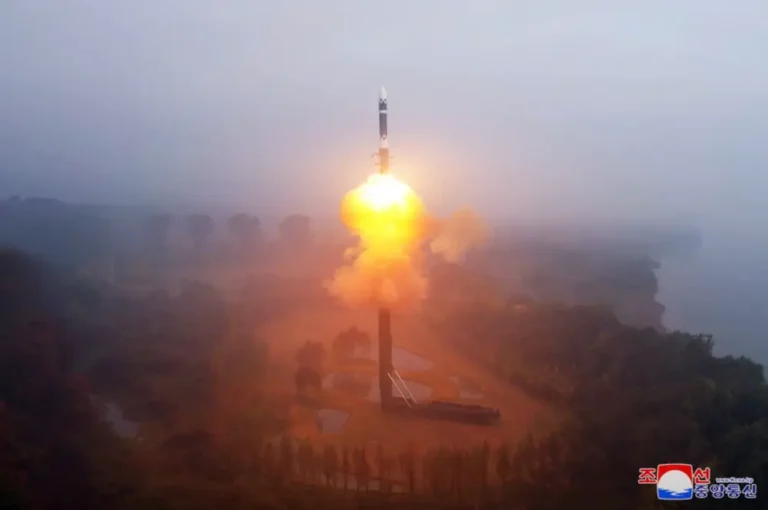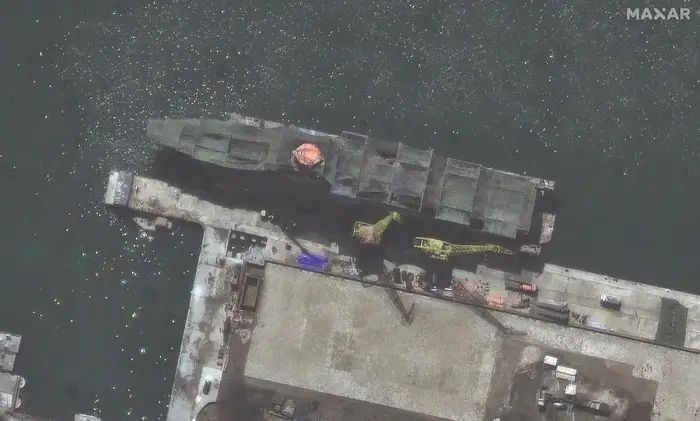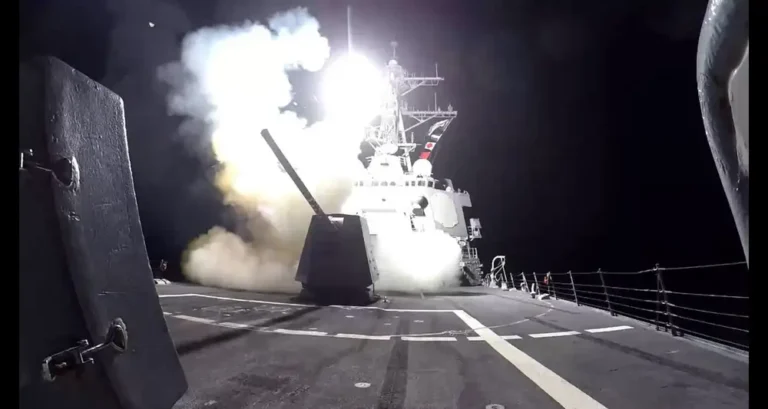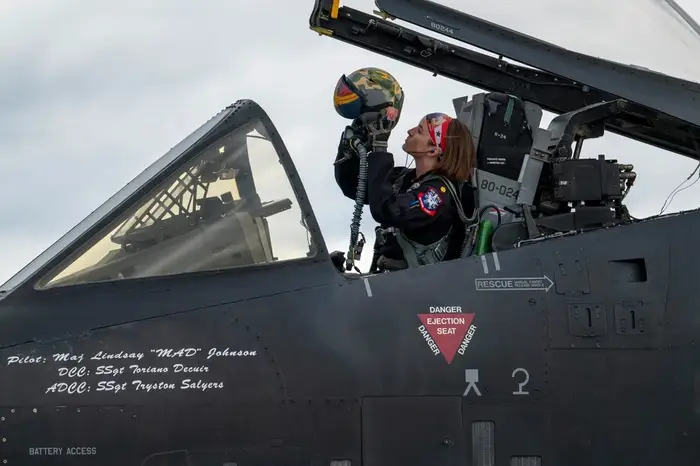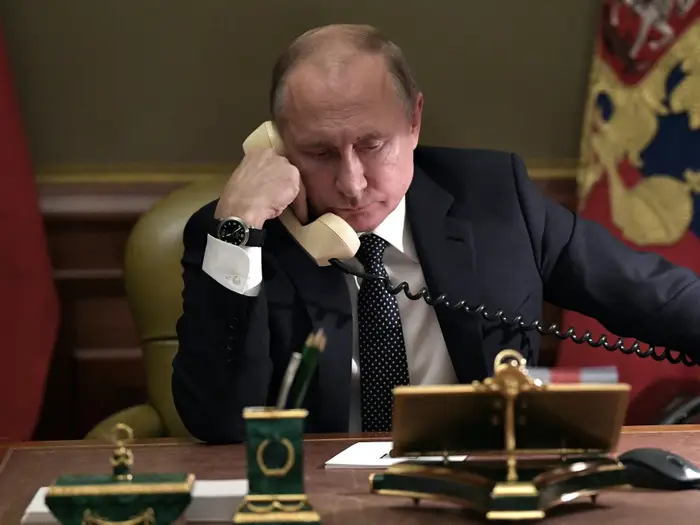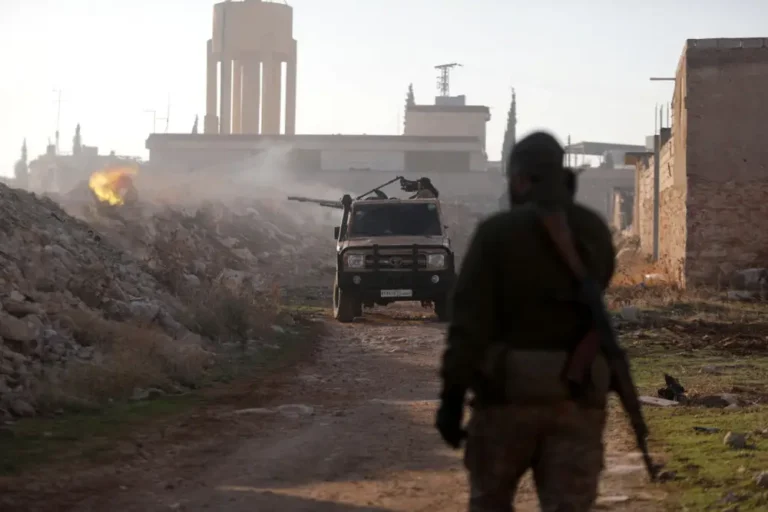US Air Force pilots share what it takes to make the elite Thunderbirds team and fly F-16s just inches apart at near-supersonic speeds

A Thunderbird F-16 taxis down the flight line as other aircraft fly in the skies above it.
For over seven decades, the Thunderbirds, the US Air Force’s aerial demonstration squadron, have roared through the skies at airshows worldwide.
At shows, a team of six pilots perform aerial maneuvers and tight formation flying at near-supersonic speeds, demonstrating the power and precision of Lockheed Martin’s F-16 Fighting Falcon.
Some Thunderbird pilots spend at least a decade flying fighter aircraft to qualify for the team. In an interview with B-17 ahead of the Pacific Airshow in Huntington Beach, California this month, two pilots described how they rose from rookie pilots to Thunderbird elites.
Becoming fighter pilots
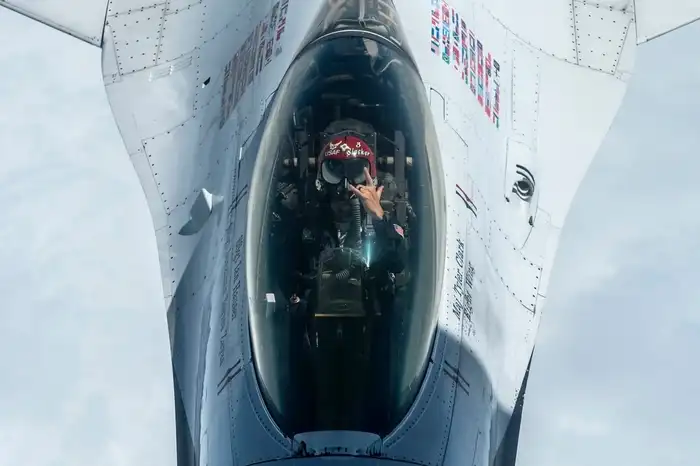
Thunderbirds pilot Maj. Tyler Clark poses for the camera from the cockpit of an F-16 during flight.
Air Force Maj. Tyler “Slasher” Clark, a right-side formation pilot, said he was inspired to become a fighter pilot as a kid after seeing the US Navy’s Blue Angels and Thunderbirds.
“When you see the pilot get out of the cockpit, it was like, ‘Holy cow, someone is actually doing that,'” said Clark, who has been in the Air Force for 14 years.
“That’s when I knew exactly what I wanted to go do: one, fly fighters; and two, if the opportunity presented itself, I thought it’d be really cool to hopefully inspire that next generation by doing exactly what they did for me several years ago.”
The South Carolina native is the first Air National Guard pilot to join the demo team. Prior to joining the squadron, he flew the McDonnell Douglas F-15C Eagle as an evaluator and instructor pilot, logging nearly 2,000 flight hours.
Air Force Maj. Jeffrey “Simmer” Downie, one of two solo pilots on the demo team, spent about a decade flying the F-16 to qualify as a Thunderbird pilot.
After graduating from the Air Force Academy in 2013, he completed pilot training and fighter fundamental instruction. As an F-16 instructor and evaluator pilot, Downie logged over 1,600 flight hours, including nearly 400 combat hours in Afghanistan during Operations Freedom Sentinel and Resolute Support.
Thunderbird tryouts involve flying and interviews
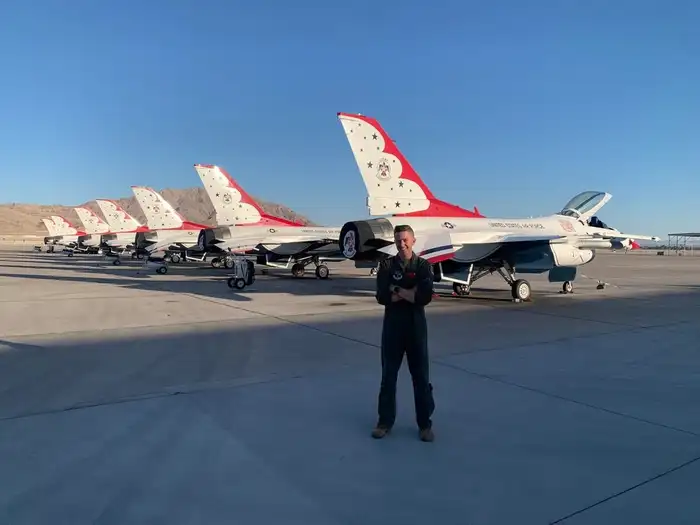
Maj. Tyler Clark stands in front of a line of Thunderbird F-16s.
Only two or three Thunderbird pilot slots open up every year, making the selection process highly competitive. Clark said the team could receive anywhere from 75 to 100 applications just for one flying position.
Applicants are typically fighter instructors or evaluator pilots with eight to 12 years of military service and between 1,000 and 1,500 flight hours.
The tryouts consist of multiple rounds of interviews, backseat flying, and seeing the enlisted personnel in action. Select candidates join the demo early in the show season to see how well they work with the team, both on the ground and in the air, he said.
“From start to finish, for an applicant who makes it to the team, you’re looking at about an eight to 10-month window before they finally get to show up,” Clark said, adding that new recruits go through four to five months of additional training ahead of the performance season.
During training season, Downie said pilots fly twice a day for about six days a week in preparation for the show circuit.
“It’s kind of like a professional sports team,” he said. “We have to have each other’s backs; we have to trust each other. So it takes a lot of meticulous time, effort, energy, blood, sweat, and tears.”
Thunderbirds need training to withstand G-forces
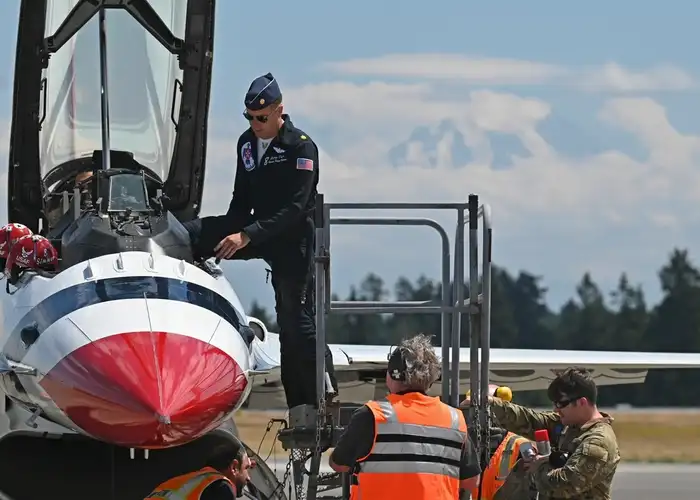
US Air Force Maj. Jeffrey Downie, a Thunderbird pilot, steps out of the cockpit of an F-16 Fighting Falcon aircraft.
Thunderbirds require physical preparation to handle the intense G-forces they experience in the sky.
“Flying a jet like this is actually an extremely physical endeavor,” Downie said. “Think about a roller coaster or a car — when you take a turn really fast, you get pushed into the side of it. For us in these jets, all that pressure is actually going through the longitudinal axis, and we can pull up to nine times the force of gravity on our bodies.”
“With all my gear being 200 pounds, when I pull nine Gs, I feel like I’m 1,800 pounds. If I try to lift my arm up that weighs 10 pounds, it’s like I’m doing a 100-pound lift,” he continued. “And then we also do a straining maneuver in order to keep the blood up in our brain so we don’t pass out.”
The team shows off combat moves
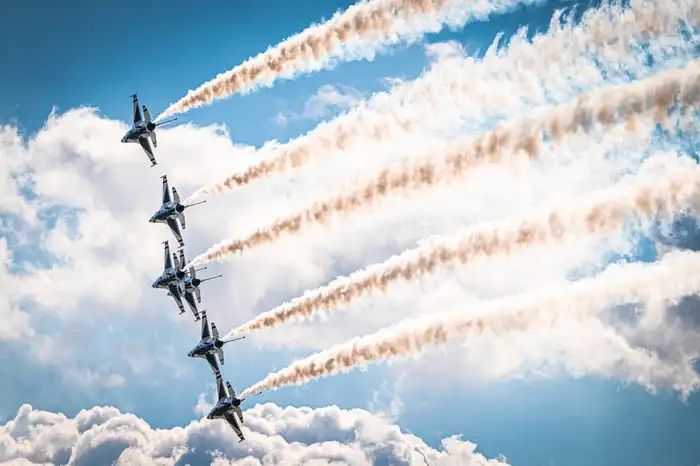
Controls drag behind a row of F-16 Fighting Falcons aircraft from the Thunderbirds demo team.
While Thunderbird pilots are tasked with entertaining the crowds with daring aerial displays, the squadron still integrates elements of the F-16’s combat capabilities into its performances.
“We weave that into the demonstration itself because our job here is to recruit, retain, and inspire,” Downie said.
The team demonstrates near-supersonic speeds so the crowd can “get a sense of what it’s like to chase down the enemy,” Downie said. “But there’s also slow-speed handling for when you’re fighting another aircraft.”
Safety is a top priority
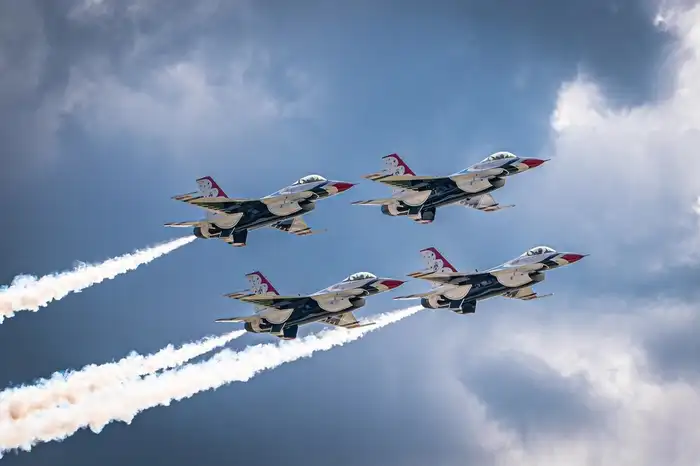
Contrails are emitted from behind F-16 Fighting Falcon aircraft during a performance.
Since the display team was formed in 1953, the Thunderbirds have seen nearly two dozen accidents, highlighting the risk of performing high-speed aerobatics in a supersonic jet.
“If there are any deviations from what is normal, you got to be ready and spring-loaded to get back into position because that’s what everyone else in the formation is trusting you to do,” Clark said.
In April 2018, Thunderbird pilot Maj. Stephen Del Bagno lost consciousness during a high G-force maneuver that required him to fly upside down. Though an investigation found that Del Bagno attempted to recover, the F-16 rapidly descended and crashed into the Nevada desert, killing him on impact.
“One of our mottos on the team is blind trust,” Clark said. “That’s something that we live by, and, unfortunately, people have also died by, so we want to make sure that we have that solid.”
The team’s biggest challenge
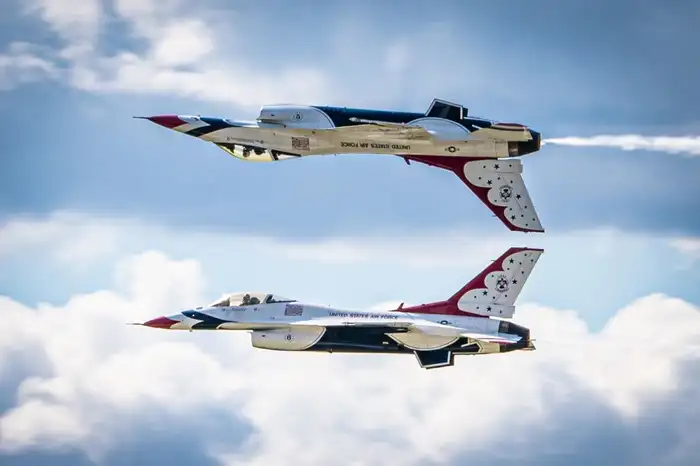
Two F-16 Fighting Falcons fly near each other during a performance.
Both Thunderbird pilots agreed that the most challenging part of being on the demo team is, unsurprisingly, flying.
“You’ll see us flying as close as 18 inches apart, up to 150 feet off the ground, and up to, but not at, the speed of sound, so we are literally right up to the edge of the envelope of what’s possible in these jets,” Downie said, adding that the aircraft aren’t allowed to go supersonic during demos.
“It’s as hard as you would think it would be,” the solo pilot continued. “Our goal is to make it look easy, so you guys are watching on the ground like, ‘Oh, that’s so smooth and calm and easy,’ but really, we’re working really super hard in the cockpit.”
Inspiring the next generation
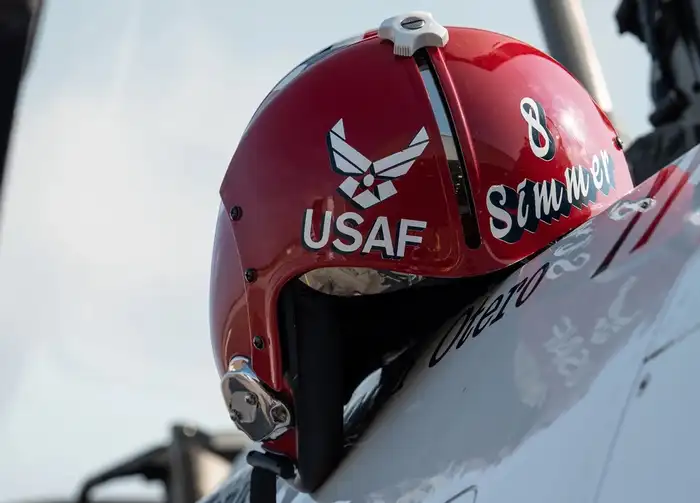
An Air Force Thunderbirds helmet is pictured atop an F-16 Fighting Falcon.
Clark said the best part of the shows is meeting with fans after landing.
“We get to high-five these kids, shake their hands. I get to give little flags to some special kids in the crowd and let ’em know that this flew in my jet today,” he said. “Those special moments are when you meet the kids in the crowd that had that little sparkle in their eye, and they’re like, ‘Oh, there’s actually a person in that jet flying, and maybe that’s something I can do.’ After my time on the team, I’m going to look back and remember those moments.”

